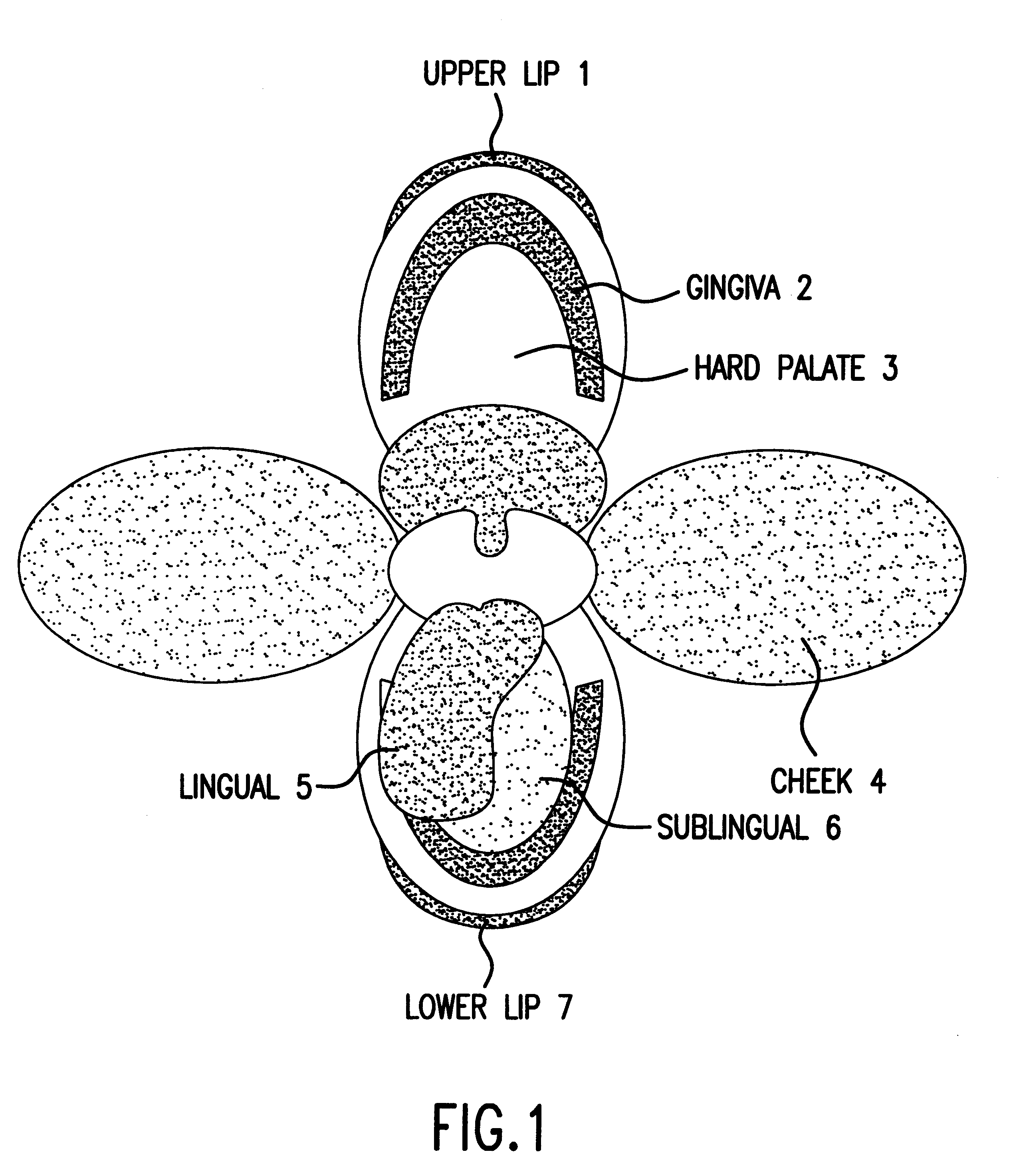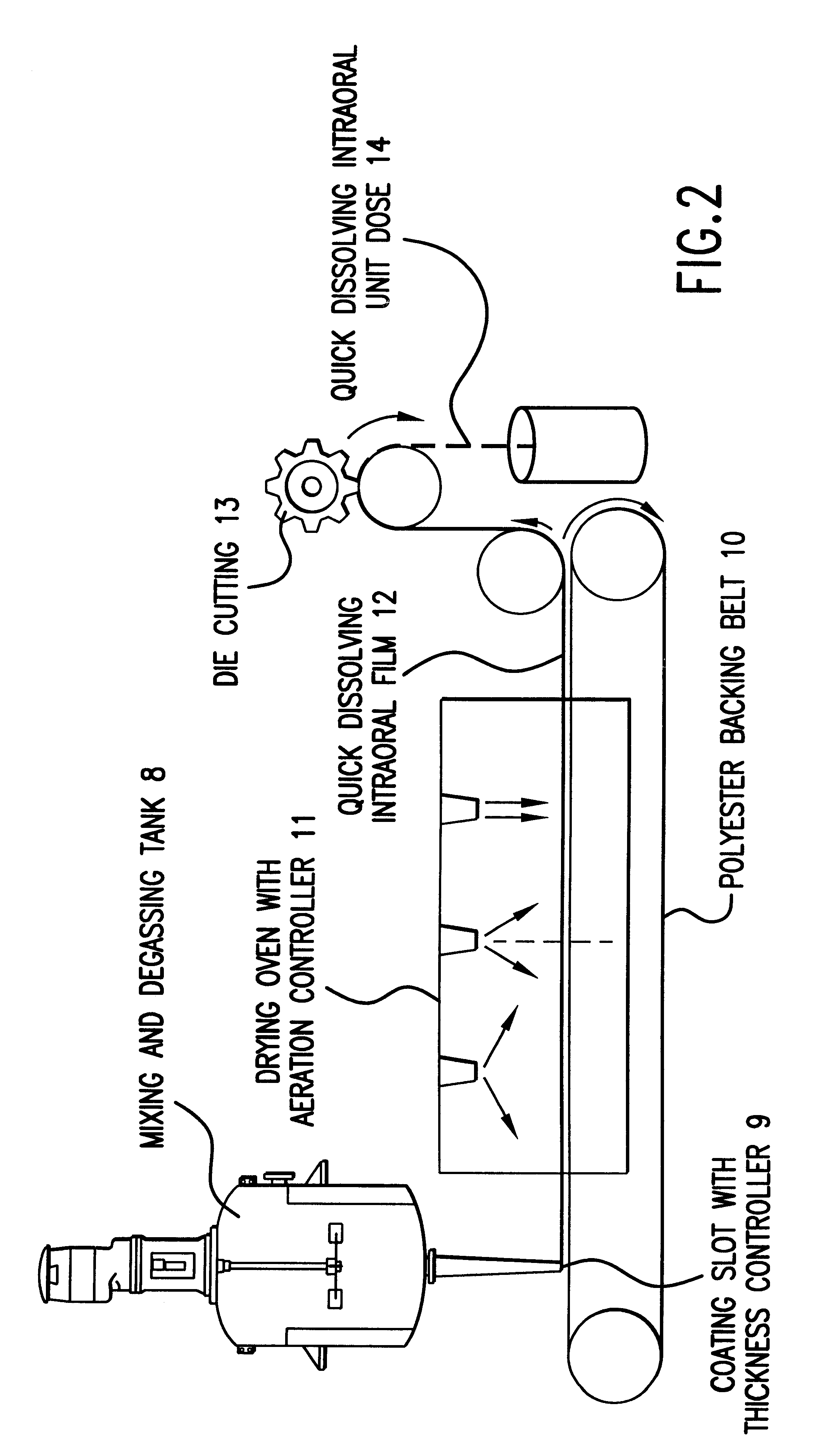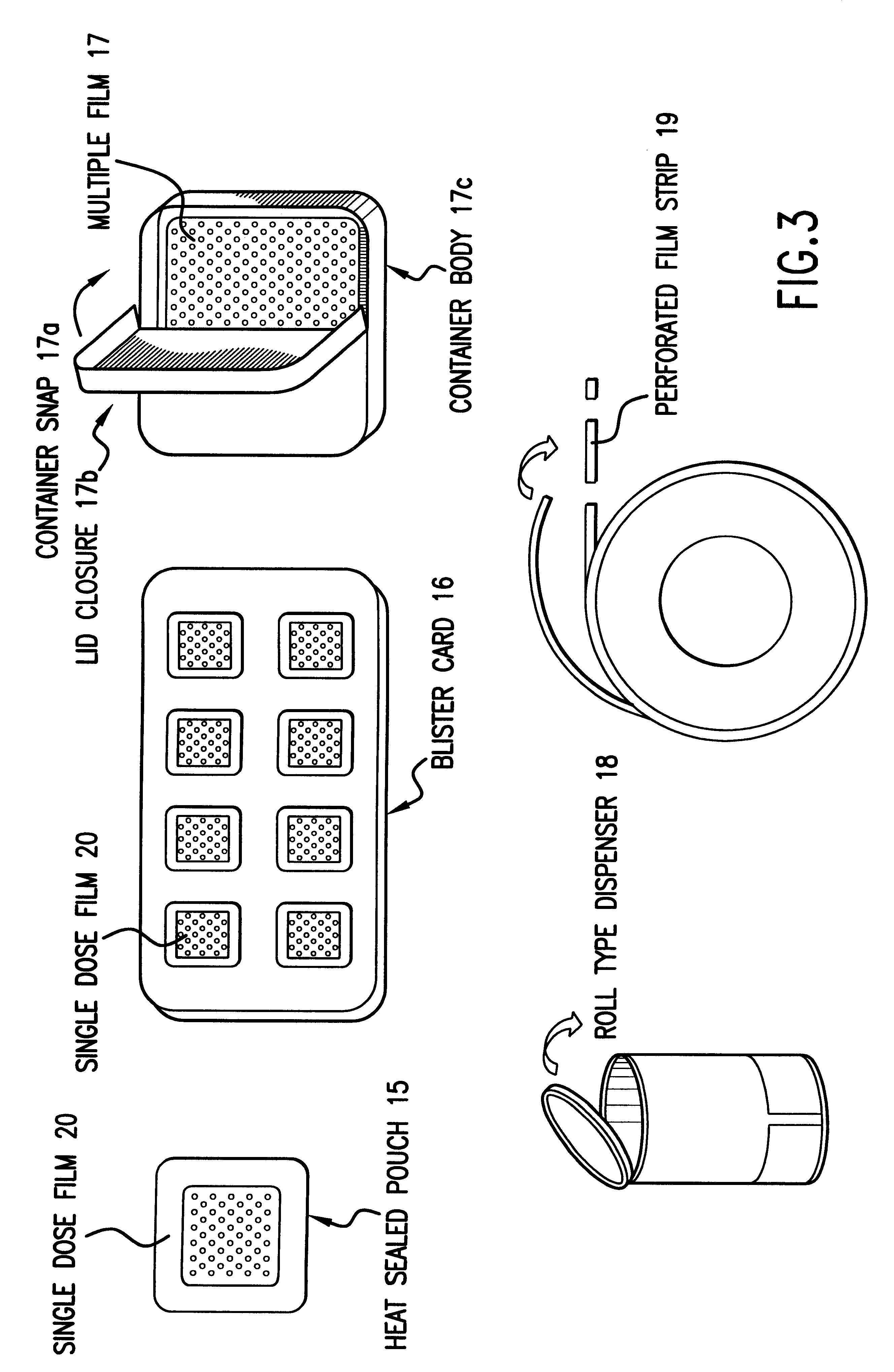Compositions and methods for mucosal delivery
a technology of compositions and methods, applied in the direction of drug compositions, antibacterial agents, biocides, etc., can solve the problems of patients who are unwilling to take solid dosage forms, patients who cannot swallow solid dosage forms, and limited availability of liquids at the time of administering medications
- Summary
- Abstract
- Description
- Claims
- Application Information
AI Technical Summary
Problems solved by technology
Method used
Image
Examples
examples 1-3
Quick Dissolving Films, Compositions and Associated Properties
The films were prepared as follows: a homogeneous mixture of ingredients was prepared in a coating solution in the amounts indicated in Table 1. The amounts are given as percentage weight of coating solution. The mixture was degassed in a vacuum chamber and coated on the non-siliconized side of a polyester film and dried in a hot air circulating oven to form a self supporting non-tacky and flexible film. The film was then cut into dosage units ready for packaging.
TABLE 2
TABLE 3
TABLE 4
examples 4-8
Hydropropylmethylcellulose Based Quick Dissolving Intraoral Film Containing Therapeutic Agents
The films were prepared according to Examples 1-3. Therapeutic agents were added to the homogeneous mixture (coating solution) prior to forming the film.
TABLE 6
TABLE 7
TABLE 8
example 9
A Comparison of Properties of Dosage Units Using Different Hydroxypropylmethylcellulose Polymers
The properties of a dosage unit according to the invention may be modified by varying individual components. For example, the dissolution of the film may be prolonged by using hydroxypropylmethylcellulose (HPMC) with higher molecular weight as shown below in Table 9.
TABLE 9b
PUM
| Property | Measurement | Unit |
|---|---|---|
| elongation | aaaaa | aaaaa |
| tensile strength | aaaaa | aaaaa |
| tensile strength | aaaaa | aaaaa |
Abstract
Description
Claims
Application Information
 Login to View More
Login to View More - R&D
- Intellectual Property
- Life Sciences
- Materials
- Tech Scout
- Unparalleled Data Quality
- Higher Quality Content
- 60% Fewer Hallucinations
Browse by: Latest US Patents, China's latest patents, Technical Efficacy Thesaurus, Application Domain, Technology Topic, Popular Technical Reports.
© 2025 PatSnap. All rights reserved.Legal|Privacy policy|Modern Slavery Act Transparency Statement|Sitemap|About US| Contact US: help@patsnap.com



